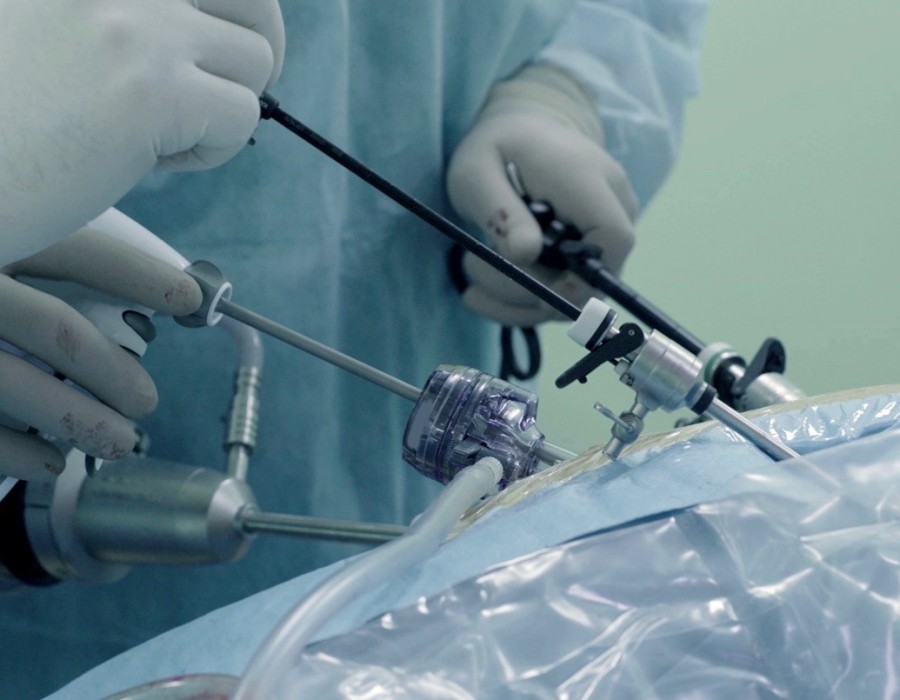In the realm of modern medicine, laparoscopic surgery has revolutionized the way surgeons perform intricate procedures. If you’ve ever wondered, “How does laparoscopic surgery aid in visualization?”, the answer lies in its cutting-edge use of high-definition cameras and minimal incisions that enhance surgical accuracy. Patients looking for advanced, minimally invasive options often choose Laparoscopic Surgery in Dubai, where leading institutions like Dynamic Clinic integrate innovation with expert care to ensure exceptional outcomes.
What Is Laparoscopic Surgery?
Laparoscopic surgery, often referred to as minimally invasive surgery, involves using a slender instrument known as a laparoscope—a small tube equipped with a high-resolution camera and light source. This device is inserted through tiny incisions, allowing surgeons to view internal organs on a monitor in real-time.
Unlike traditional open surgeries that require large incisions, this technique minimizes trauma to the body while enhancing precision, recovery speed, and overall surgical safety.
How Laparoscopic Surgery Enhances Visualization
1. High-Definition Camera Technology
The cornerstone of laparoscopic surgery is its advanced camera system. The laparoscope captures detailed, magnified images of internal organs, allowing surgeons to see structures that would otherwise be difficult to identify with the naked eye.
Key advantages include:
- Enhanced clarity: High-definition imaging provides a crystal-clear view of tissues, blood vessels, and internal structures.
- Magnification: Surgeons can zoom in to observe even the smallest anatomical details.
- Color contrast: Modern systems offer superior color differentiation, helping identify abnormalities with precision.
2. Real-Time 3D Visualization
Today’s laparoscopic equipment supports 3D visualization, enabling depth perception during surgery. This allows for improved accuracy when cutting, suturing, or cauterizing tissues. Surgeons can navigate complex anatomy effortlessly, significantly reducing the margin for error.
Benefits of Improved Visualization
Enhanced visualization plays a vital role in ensuring surgical success. Here’s how it benefits both patients and practitioners:
For Surgeons
- Better accuracy: Surgeons can perform delicate maneuvers with exceptional control.
- Reduced fatigue: Ergonomic camera angles decrease physical strain during long procedures.
- Improved outcomes: Fewer complications and shorter surgery times enhance procedural efficiency.
For Patients
- Minimal scarring: Smaller incisions mean reduced visible marks post-surgery.
- Faster recovery: Less tissue damage speeds up healing and reduces hospital stay.
- Lower risk of infection: Tiny entry points minimize the exposure of internal organs.
Step-by-Step: How the Visualization Process Works
To understand how laparoscopic surgery aids in visualization, let’s look at a simplified step-by-step overview of the procedure:
- Anesthesia administration: The patient is gently put under general anesthesia.
- Small incisions: A few small openings (usually less than 1 cm) are made in the abdomen.
- Insertion of laparoscope: A thin tube with a high-definition camera is inserted.
- Gas insufflation: Carbon dioxide gas inflates the abdominal cavity for a clearer view.
- Image projection: Real-time visuals are displayed on a large monitor, guiding the surgeon.
- Precision operation: Specialized instruments are used to perform the surgery while watching the monitor.
- Closure: The gas is released, and the small incisions are sealed.
This process ensures optimal accuracy while minimizing trauma and promoting rapid recovery.
Why Laparoscopic Surgery Is the Future of Modern Medicine
The global shift toward minimally invasive techniques has placed laparoscopic procedures at the forefront of surgical innovation. The superior visualization provided by laparoscopic technology is reshaping how surgeons diagnose and treat internal conditions—from gallbladder removal to hernia repairs and gynecological procedures.
Highlights That Make It Stand Out
- Precision-guided operations through real-time imaging
- Reduced postoperative pain and shorter recovery periods
- Greater patient comfort and improved cosmetic results
- Environmentally safer with advanced sterilization systems
These factors contribute to laparoscopic surgery’s growing popularity, especially in medical hubs like Dubai, where cutting-edge facilities and global standards attract patients worldwide.
How Laparoscopic Visualization Improves Patient Safety
Enhanced visualization isn’t just about clarity—it’s about safety and control. With magnified 3D imaging and real-time feedback, surgeons can identify even minute bleeding points, avoid unnecessary tissue damage, and ensure precise organ handling. This reduces the likelihood of postoperative complications and ensures that every surgical movement is deliberate and calculated.
The Role of Dubai in Advancing Surgical Visualization
Dubai has positioned itself as a global leader in medical innovation. Through advanced hospitals, internationally accredited facilities, and specialized centers like Dynamic Clinic, patients receive access to some of the most refined laparoscopic technologies available today.
Professionals in Dubai continuously invest in next-generation surgical tools, ensuring that patients benefit from exceptional care grounded in expertise, experience, and trustworthiness—core elements of the EEAT framework valued by both Google and the medical community.
Conclusion
So, how does laparoscopic surgery aid in visualization? By combining high-definition imaging, 3D magnification, and minimally invasive access, it allows surgeons to perform complex procedures with unmatched accuracy. In regions like Dubai—where medical excellence meets innovation—laparoscopic surgery represents not just a modern treatment technique, but the future of safe, precise, and patient-centered care.





Comments